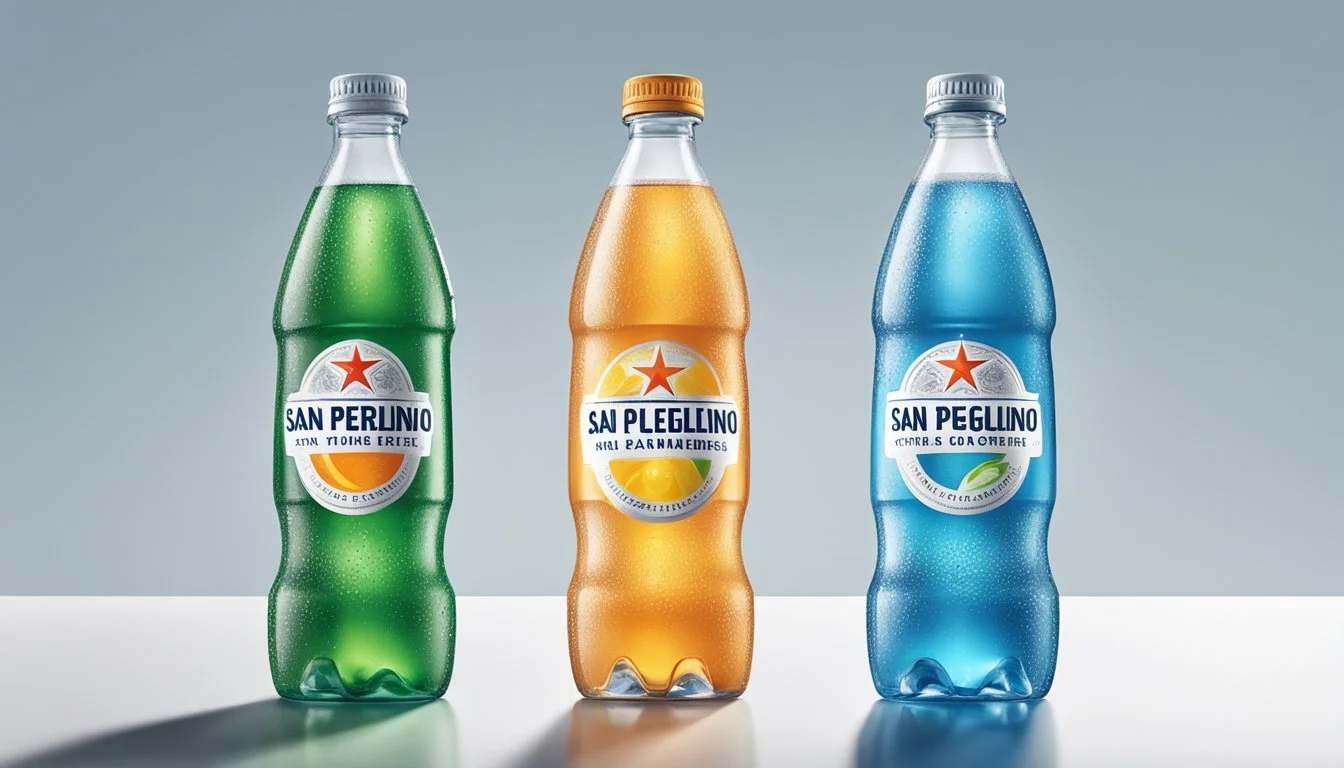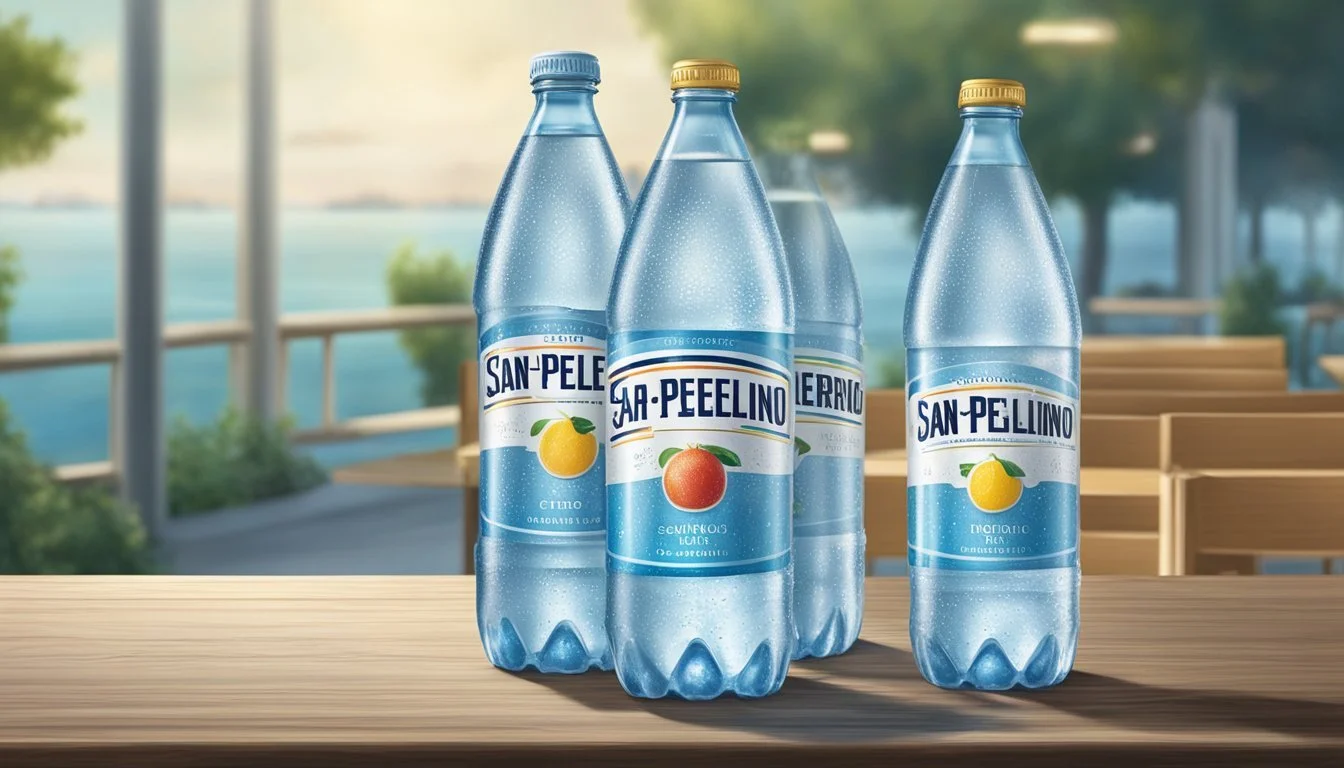San Pellegrino vs. Cirro
Comparing Bottled Water Quality
San Pellegrino and Cirro are two prominent names in the world of bottled water, each bringing unique qualities to the table. San Pellegrino is well-known for its sparkling mineral water, sourced from the San Pellegrino Terme area in Italy and celebrated for its crisp, refreshing taste. Cirro, while perhaps less internationally renowned, offers a compelling alternative with its own set of distinctive features.
San Pellegrino’s sparkling quality and iconic taste make it a standout choice for those seeking a premium drinking experience. On the other hand, Cirro's product line, although less advertised, prides itself on purity and a clean, refreshing flavor that appeals to many health-conscious consumers. Both brands highlight the importance of proper serving temperatures to enhance the drinking experience—San Pellegrino at a cooler range and Cirro with its versatility in various conditions.
Making an informed choice between San Pellegrino and Cirro involves considering personal preferences for flavor, carbonation, and the specifics of how and where you plan to enjoy your bottled water. Exploring the attributes of both can help consumers decide which bottled water truly meets their hydration and taste needs.
Brand Origin and History
San Pellegrino and Cirro Water have unique origins and histories that set them apart. San Pellegrino, steeped in Italian tradition, contrasts with Cirro Water's more contemporary emergence in the bottled water market.
San Pellegrino: Icon of Italian Elegance
San Pellegrino originates from San Pellegrino Terme, a town nestled in the Italian Alps. This renowned brand dates back to 1899, when the Societa Anonima delle Terme di S. Pellegrino was established to bottle and distribute the water. The source of San Pellegrino is located in a revered area known for its mineral-rich springs, attracting travelers and health enthusiasts for centuries.
The water is naturally filtered by the dolomitic rocks of the Alps. It takes around 30 years for the water to surface after being enriched with essential minerals.
Leonardo da Vinci is said to have visited the springs and praised their quality, although the historical accuracy is debated. Today, San Pellegrino represents Italian elegance with its green glass bottles, often associated with fine dining and gourmet culture.
Cirro Water: The New Challenger
Cirro Water is a more recent entrant into the bottled water sector. Emerging in the last decade, Cirro has quickly gained recognition for its crisp taste and modern approach to marketing. Unlike San Pellegrino, Cirro sources its water from various globally recognized springs, ensuring high-quality standards.
The brand has positioned itself as a premium option, leveraging cutting-edge technology for bottling and sustainability practices. The water undergoes multiple stages of filtration and mineral enhancement, providing a consistently clean and refreshing experience.
Cirro emphasizes transparency and quality, aiming to carve a niche in the competitive bottled water market. The brand’s innovative approach and commitment to excellence make it a noteworthy competitor against established names like San Pellegrino.
Source and Natural Environment
San Pellegrino and Cirro are both renowned for their unique sources and the natural environments from which they are drawn. Understanding these origins can provide insights into the distinctive qualities of each water brand.
The Springs of San Pellegrino
San Pellegrino is sourced from the foothills of the Italian Alps in the region of Lombardy. The water bubbles up through limestone and volcanic rock over a 30-year journey, accumulating minerals like calcium and magnesium, which contribute to its distinct taste.
The natural springs are located in the small town of San Pellegrino Terme, which has been famous for its mineral-rich waters since the 13th century. Set against the backdrop of the Alps, the environment is pristine, ensuring the purity of the water that eventually makes its way into the bottle.
Cirro's Aquifer Origins
Cirro water is sourced from a deep aquifer located beneath the fertile lands of Tuscany, Italy. This aquifer collects rainwater that seeps through layers of limestone, which naturally filters and enriches the water with essential minerals, giving Cirro its clean and crisp character.
The sourcing process involves tapping into an ancient underground reservoir, ensuring that the water is protected from surface contaminants. Tuscany's natural environment, with its rich soil and abundant rainfall, plays a crucial role in maintaining the quality and sustainability of Cirro water.
Production and Bottling Process
Both San Pellegrino and Cirro focus on crafting high-quality sparkling mineral water, but their production and bottling processes involve distinct techniques and technologies.
Crafting San Pellegrino's Bubbles
San Pellegrino's sparkling water originates from a natural spring in the Italian Alps. The water emerges uncarbonated and is infused with carbon dioxide harvested from a nearby spring. This CO2 is purified and reintroduced to provide the signature bubbles.
The water is filtered for impurities before being bottled. San Pellegrino uses glass bottles for its premium products, ensuring both aesthetic appeal and preservation of quality. Each bottle is carefully packaged to maintain the sparkling mineral water's integrity.
Cirro's Bottling Innovation
Cirro employs advanced technology in its bottling process. Unlike San Pellegrino, the carbonation for Cirro's sparkling water is introduced during the bottling stage. Freshwater is sourced, filtered, and then carbonated with purified CO2.
Cirro emphasizes sustainability, opting for lightweight glass bottles that reduce environmental impact. The packaging is designed to be both eco-friendly and durable. They ensure rigorous quality control at each step, maintaining the sparkling water's refreshing taste and effervescence.
Mineral Content and Health Benefits
San Pellegrino and Cirro both offer unique mineral compositions that contribute to their distinct health benefits. Understanding the differences in their mineral content can help you choose the right bottled water for your needs.
Minerals in San Pellegrino
San Pellegrino is renowned for its mineral content, sourced from the Italian Alps. This mineral water is rich in calcium, magnesium, and bicarbonates.
Calcium: Approximately 208 mg/L, essential for strong bones and teeth.
Magnesium: Around 54 mg/L, beneficial for muscle function and energy production.
San Pellegrino also contains smaller amounts of sodium and potassium, which aid in maintaining electrolyte balance. The natural minerals in San Pellegrino contribute to its slightly salty taste and offer various health benefits, including improved digestion and hydration.
Cirro's Electrolyte Profile
Cirro focuses on providing a high electrolyte content to support hydration and energy levels. It features potassium, sodium, and magnesium prominently:
Potassium: Promotes cardiovascular health and nerve function.
Sodium: Helps regulate fluid balance and muscle contractions.
Magnesium: Supports metabolic processes and muscle health.
Cirro's mineral content makes it ideal for those who require quick electrolyte replenishment, such as athletes or individuals in hot climates. The health benefits of Cirro are particularly advantageous for maintaining hydration and preventing cramps during physical activities.
Taste Profile and Culinary Use
San Pellegrino and Cirro offer distinct taste profiles that cater to different palates and culinary uses. Specifics such as pH levels, flavor notes, and serving conditions help differentiate their unique experiences.
San Pellegrino's Signature Flavor
San Pellegrino boasts a crisp and clean taste underscored by subtle mineral undertones. Its effervescent carbonation adds vitality, making it a refreshing choice.
The pH level of around 7.7 contributes to its balanced and slightly neutral taste. This sparkling water's delicate flavor profile complements a wide array of foods, particularly rich dishes and fine wines.
San Pellegrino's light minerality and delicate bubbles provide a refreshing palate cleanser during meals, enhancing the dining experience without overwhelming the senses.
Cirro: A Taste Sensation
Cirro is renowned for its silky smooth taste and a pH of approximately 8.0. The water's balanced pH contributes to a neutral yet subtly sweet taste that appeals to a diverse range of palates.
Unlike the effervescence of San Pellegrino, Cirro often shines in its purity and softness, derived from its pristine source. This makes it an ideal partner for various culinary applications, including fine dining and as a mixer.
Cirro’s taste profile allows for versatile culinary use, whether enjoyed alone for its mild sweetness or paired with delicate dishes that require a light and unobtrusive accompaniment.
Flavored Variations and Pairings
Understanding the variety of flavors offered and how they pair with different foods can enhance the enjoyment of bottled water. Both San Pellegrino and Cirro offer unique flavored options that cater to different tastes.
San Pellegrino's Citrus Offerings
San Pellegrino is renowned for its citrus flavors. Popular choices include lemon, orange, grapefruit, and clementine. These drinks are known for their natural taste and sparkling bubbles.
Aranciata, for instance, combines the essence of oranges with carbonated water, making it a great pairing with light salads or seafood. Chinotto, derived from a myrtle-leaved orange tree, offers a slightly bitter flavor ideal for rich and savory dishes.
Another notable option is the Arancia & Fico d'India, which blends blood orange with prickly pear. This unique flavor pairs well with spicy foods, balancing heat with its sweet and tangy profile. These citrus variations are not only refreshing but also versatile in culinary pairings.
Cirro's Exotic Blends
Cirro takes a different approach, offering exotic blends that stand out. Their selection includes peach, mint, prickly pear, and pomegranate. These flavors are crafted to provide a refreshing twist on traditional sparkling water.
For example, the Peach flavor has a subtle sweetness that pairs well with desserts, particularly fruit tarts and custards. Mint is another exotic offering; it's perfect as a palate cleanser and complements Mediterranean cuisine.
The Prickly Pear blend exudes a mild, fruity taste ideal for pairing with spicy and bold dishes. Lastly, the Pomegranate flavor is rich and slightly tart, making it a pleasant match for roasted meats and hearty grain salads.
Cirro's approach to exotic flavors ensures a refined and refreshing experience, suitable for a variety of occasions and meals. This diverse lineup is reflective of their commitment to offering innovative and enjoyable tastes.
Environmental Impact and Sustainability
San Pellegrino and Cirro are evaluated on their environmental impact and sustainability practices, focusing on their bottling, packaging, and overall eco-initiatives aimed at reducing their carbon footprint and preserving natural resources.
San Pellegrino's Eco-initiatives
San Pellegrino has implemented several measures to address its environmental impact.
The company aims to achieve carbon neutrality for its San Pellegrino and Acqua Panna brands. They have pledged to cancel emissions by using more recycled PET (r-PET) in their bottles. For instance, in 2022, they used 7,246 tonnes of r-PET, increasing from the previous year.
Moreover, San Pellegrino focuses on sustainability across its supply chain, with a significant portion of ingredients sourced from local suppliers. Their natural springs are managed to maintain water purity and efficiency.
Cirro's Commitment to Nature
Cirro’s sustainability efforts emphasize the use of materials and practices that minimize environmental impact.
They use glass bottles which are more easily recyclable compared to plastic alternatives. This reduces waste and supports a circular economy. Cirro sources its water from natural springs, ensuring the preservation and purity of these vital resources.
Cirro also incorporates eco-friendly packaging solutions and emphasizes reducing carbon emissions throughout their logistics and distribution networks. The company invests in renewable energy and sustainable technologies to further lower their environmental footprint.
Market Presence and Consumer Preference
San Pellegrino has established itself firmly in the worldwide market, widely recognized and often associated with high-end dining experiences. On the other hand, Cirro is gaining traction, especially among consumers who prefer niche, artisan brands.
Global Reach of San Pellegrino
San Pellegrino is a leading name in bottled water, prominently featured in upscale restaurants and fine dining venues. Nestlé, the parent company, has leveraged its vast distribution network to ensure San Pellegrino's availability in more than 120 countries.
San Pellegrino appeals to the discerning customer, often endorsed by sommeliers and water experts for its distinct mineral profile. The brand’s emphasis on quality and heritage further solidifies its position in the market.
Various marketing strategies and sponsorships of culinary events bolster its elite image. The loyalty among its consumers is strong, driven by brand reputation and consistent product quality.
Cirro: Rising in Popularity
Cirro, while not as globally pervasive as San Pellegrino, is on an upward trajectory. This artisanal brand appeals to consumers who value sustainability and unique sourcing. Often marketed as an exclusive, small-batch product, Cirro is carving a niche in the premium bottled water segment.
Its growing popularity is evident in specialty stores and gourmet markets. Environmental consciousness among consumers also adds to Cirro's appeal, as the brand emphasizes eco-friendly packaging and practices.
Consumer preference for Cirro often hinges on personal taste and the appeal of supporting a smaller, emerging brand. This trend is reinforced by endorsements from niche influencers and independent water sommeliers.
Comparative Analysis
San Pellegrino and Cirro bring unique strengths to the table regarding pricing, health considerations, and taste. This analysis will help highlight key differences and similarities to aid informed choices.
Pricing and Accessibility
San Pellegrino is known for its premium pricing, attributed to its natural carbonation and mineral content sourced from Italy. Typically priced higher than average sparkling waters, it appeals to those valuing luxury.
In contrast, Cirro aims for a more budget-friendly approach, making it widely accessible. Despite its lower cost, it maintains good quality standards. Accessibility can often be a deciding factor, and Cirro’s pricing strategy allows it to be available in more diverse retail scenarios, from high-end stores to local markets.
Price Comparison Table:
Brand Typical Price Range (per bottle) Availability San Pellegrino $1.50 - $3.00 High-end stores, specialty Cirro $0.80 - $1.50 Supermarkets, online
Health Considerations
San Pellegrino boasts a significant mineral content, including magnesium (52 mg/L) and sulfates, beneficial for digestive health. Its pH level at source is alkaline (7.7), but the carbonation process makes it slightly acidic (pH 5.6) by the time it reaches consumers.
Cirro also offers carbonated options but with less focus on mineral content. Its health benefits are comparative to other affordable brands like La Croix and Topo Chico, offering simple hydration without significant mineral supplementation.
Key Health Factors:
San Pellegrino: High in magnesium and sulfates, alkaline at source, slightly acidic when sold.
Cirro: Basic mineral content, focuses on hydration rather than mineral benefits.
Taste and Palate Cleansing Properties
San Pellegrino is favored for its crisp and refreshing taste, with a slightly higher level of fizz compared to brands like Perrier. This high carbonation level makes it an excellent palate cleanser, especially with rich or fatty foods.
Cirro delivers a more straightforward taste experience with moderate carbonation. While not as effervescent as San Pellegrino, it offers a clean taste, suitable for everyday consumption and pairing with lighter meals.
Palate Cleansing:
San Pellegrino: High carbonation, ideal for cleansing the palate with rich foods.
Cirro: Moderate carbonation, simpler taste, suitable for lighter fare.
More About San Pellegrino
Acqua Panna vs San Pellegrino: Which Bottled Water is Better?
Boxed Water vs San Pellegrino: Which Bottled Water is Better?
Core Hydration vs San Pellegrino: Which Bottled Water is Better?
Ice Mountain vs San Pellegrino: Which Bottled Water is Better?
Icelandic Glacial vs San Pellegrino: Which Bottled Water is Better?
Just Water vs San Pellegrino: Which Bottled Water is Better?
Mountain Valley Spring Water vs San Pellegrino: Which Bottled Water is Better?
Nestle Pure Life vs San Pellegrino: Which Bottled Water is Better?
Poland Spring vs San Pellegrino: Which Bottled Water is Better?
San Pellegrino vs Alkaline88: Which Bottled Water is Better?
San Pellegrino vs Aqua Carpatica: Which Bottled Water is Better?
San Pellegrino vs Cascade Mountain: Which Bottled Water is Better?
San Pellegrino vs Castle Rock: Which Bottled Water is Better?
San Pellegrino vs CBD Living: Which Bottled Water is Better?
San Pellegrino vs Crystal Geyser: Which Bottled Water is Better?
San Pellegrino vs Crystal Lake: Which Bottled Water is Better?
San Pellegrino vs Essence pH10: Which Bottled Water is Better?
San Pellegrino vs Hawaii Volcanic: Which Bottled Water is Better?
San Pellegrino vs Hawaiian Springs: Which Bottled Water is Better?
San Pellegrino vs Kirkland Signature: Which Bottled Water is Better?
San Pellegrino vs Liquid Death: Which Bottled Water is Better?
San Pellegrino vs Open Water: Which Bottled Water is Better?
San Pellegrino vs Proud Source: Which Bottled Water is Better?
San Pellegrino vs Purely Sedona: Which Bottled Water is Better?
San Pellegrino vs Richard's Rainwater: Which Bottled Water is Better?
San Pellegrino vs Simple Truth: Which Bottled Water is Better?
San Pellegrino vs Smartwater: Which Bottled Water is Better?
San Pellegrino vs Solan de Cabras: Which Bottled Water is Better?
San Pellegrino vs Talking Rain AQA: Which Bottled Water is Better?
San Pellegrino vs Topo Chico: Which Bottled Water is Better?
San Pellegrino vs Weird Water: Which Bottled Water is Better?
San Pellegrino vs Whole Foods 365: Which Bottled Water is Better?
San Pellegrino vs Whole Foods Italian Still Mineral water: Which Bottled Water is Better?
San Pellegrino vs Zephyrhills: Which Bottled Water is Better?









